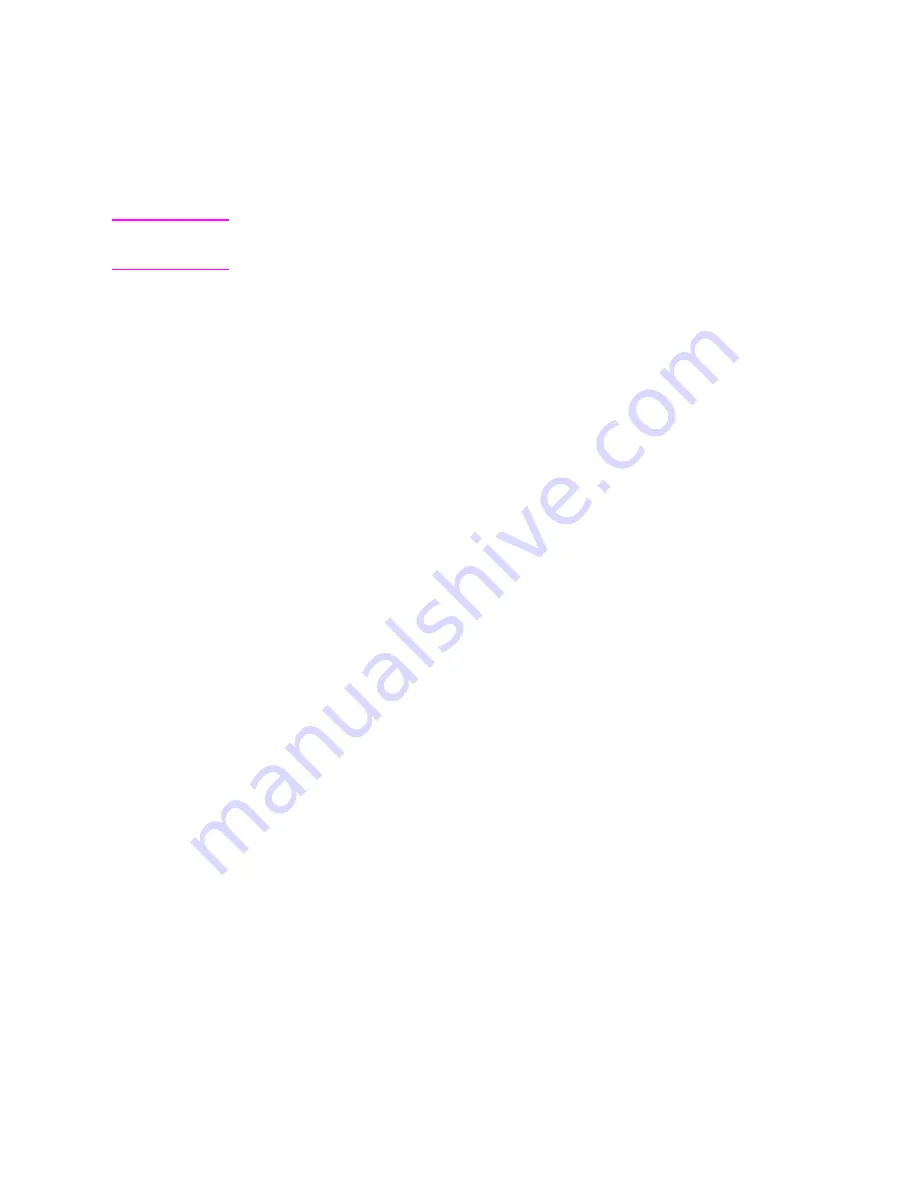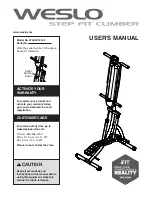
EN
Summary of Font Selection by Characteristic 8-23
Summary of Font Selection by Characteristic
The following summarizes the procedure the printer uses to select a
font. Selection by characteristic is an elimination process. The nine
steps are performed in the following order:
Note
When the printer is in 300 dpi mode, any 600 dpi bitmaps are
eliminated before the selection process begins.
1Symbol Set - if the specified symbol set exists, that symbol set is
selected; otherwise, Roman-8 is selected.
2
Spacing - if proportional spacing is specified and available,
proportional spacing is selected. If proportional spacing is
specified but is not available, fixed spacing is selected in the
current pitch. (A proportionally-spaced font is always available
in PCL 5 printers, but it may not be available in the specified
symbol set.)
3
Pitch - applies only to fixed spaced fonts. If fixed spacing is
specified and available, fixed spacing in the specified pitch is
selected.
Bitmap Fonts: For a fixed-space bitmap font, if the specified
pitch is not available, the next greater available pitch is selected.
If no greater pitch is available, the closest available lesser pitch is
selected. If fixed spacing is specified but is not available, a
proportional-spaced font is selected and the pitch characteristic is
ignored.
Scalable Fonts: For a fixed-spaced scalable font, the pitch is
used to calculate the appropriate height. The Height selection
command is not required. The printer calculates the appropriate
height to correspond to the pitch. The user’s height request is
recorded in the printer’s font select table for later font selections,
but is ignored for this selection.
4
Height - the closest height available from the remaining fonts is
selected. The closest height is in terms of absolute difference. All
bitmap fonts whose heights are within a quarter point of the
specified height are considered to have the specified height.
Summary of Contents for LaserJet 4100
Page 1: ...Part I Click here to access Part II on hp com ...
Page 2: ......
Page 26: ...Contents 14 EN ...
Page 44: ...2 10 The Page EN ...
Page 54: ...3 10 The Print Environment EN ...
Page 70: ...4 16 PCL Job Control Commands EN ...
Page 80: ...5 10 Page Control Commands EN Figure 5 3 Changing Print Direction on a Page ...
Page 82: ...5 12 Page Control Commands EN Figure 5 4 Text Area Within the Page ...
Page 110: ...6 16 Cursor Positioning EN ...
Page 120: ...7 10 Fonts EN Figure 7 11 Bitmap Character Figure 7 12 Scalable Character ...
Page 122: ...7 12 Fonts EN ...
Page 152: ...8 30 PCL Font Selection EN ...
Page 166: ...9 14 Font Management EN ...
Page 182: ...10 16 User Defined Symbol Sets EN ...
Page 237: ...EN Character Descriptor Formats 11 55 Figure 11 5 Class 2 Character Data ...
Page 240: ...11 58 Soft Font Creation EN Figure 11 6 Portrait Character Example ...
Page 241: ...EN Character Descriptor Formats 11 59 Figure 11 7 Landscape Character Example ...
Page 270: ...13 4 The PCL Print Model EN Figure 13 3 Effect of Transparency Modes on Images ...
Page 276: ...13 10 The PCL Print Model EN Figure 13 4 Shading Patterns ...
Page 277: ...EN Pattern ID Area Fill ID Command 13 11 Figure 13 5 Cross Hatch Patterns ...
Page 290: ...13 24 The PCL Print Model EN ...
Page 297: ...EN Pattern ID Area Fill ID Command 14 7 Figure 14 1 Shading Patterns ...
Page 298: ...14 8 PCL Rectangular Area Fill Graphics EN Figure 14 2 Cross hatch Patterns ...
Page 341: ...EN Raster Graphics Example 15 33 Figure 15 11Example of Raster Graphic Image Data ...
Page 342: ...15 34 Raster Graphics EN ...
Page 370: ...16 28 Status Readback EN ...
















































